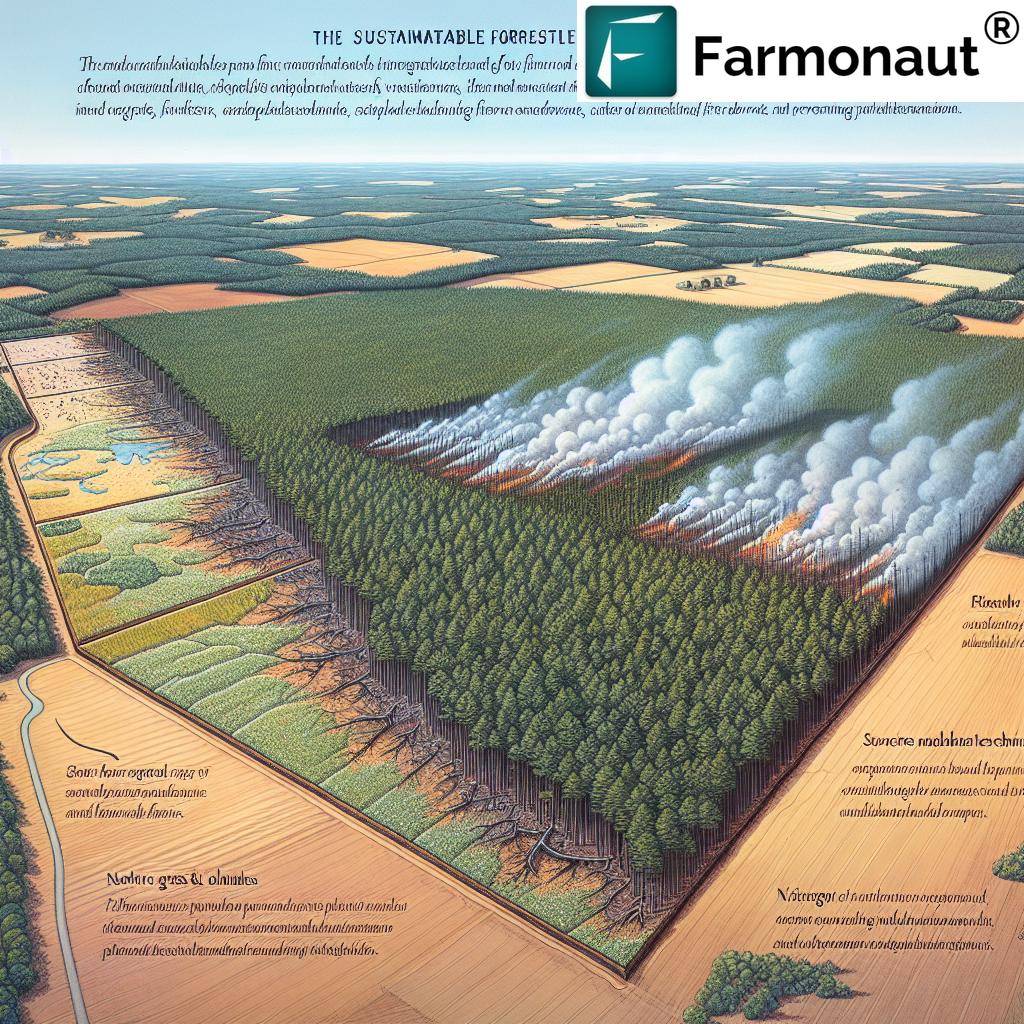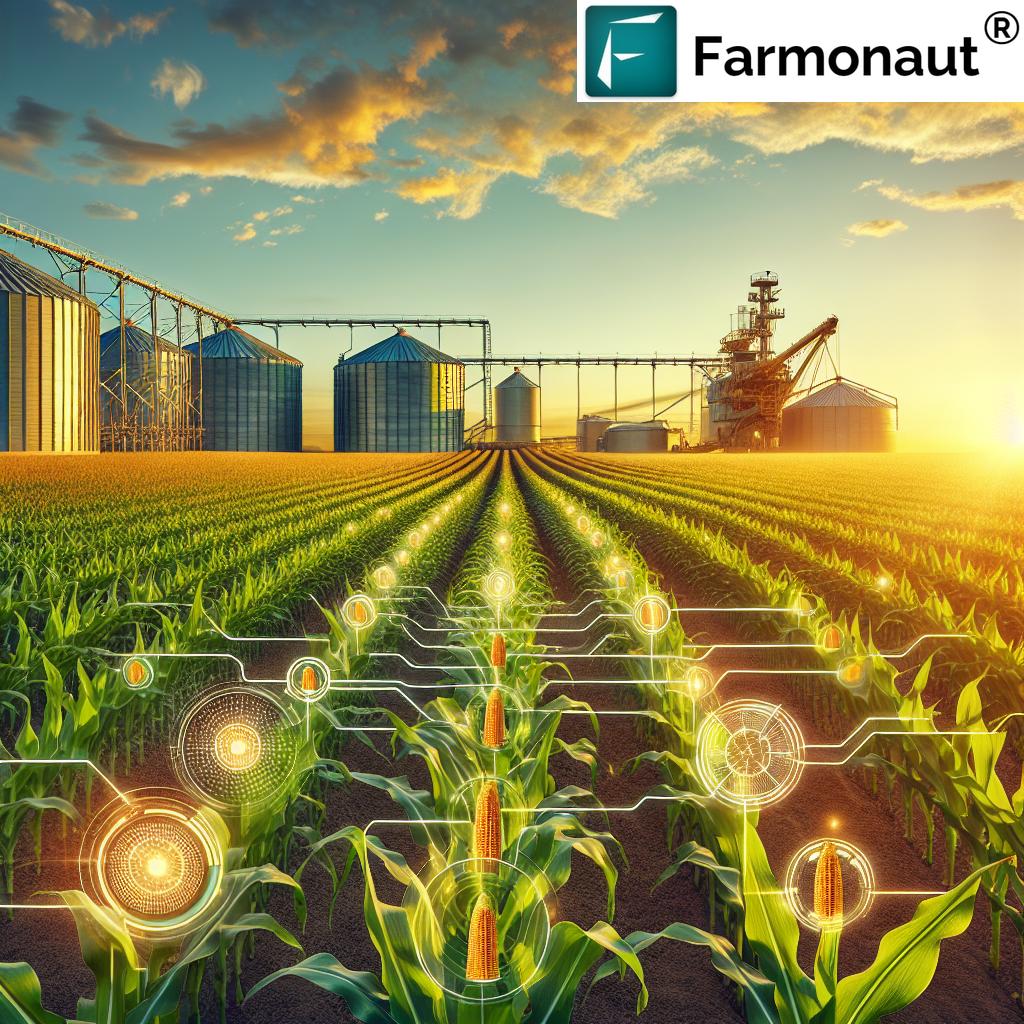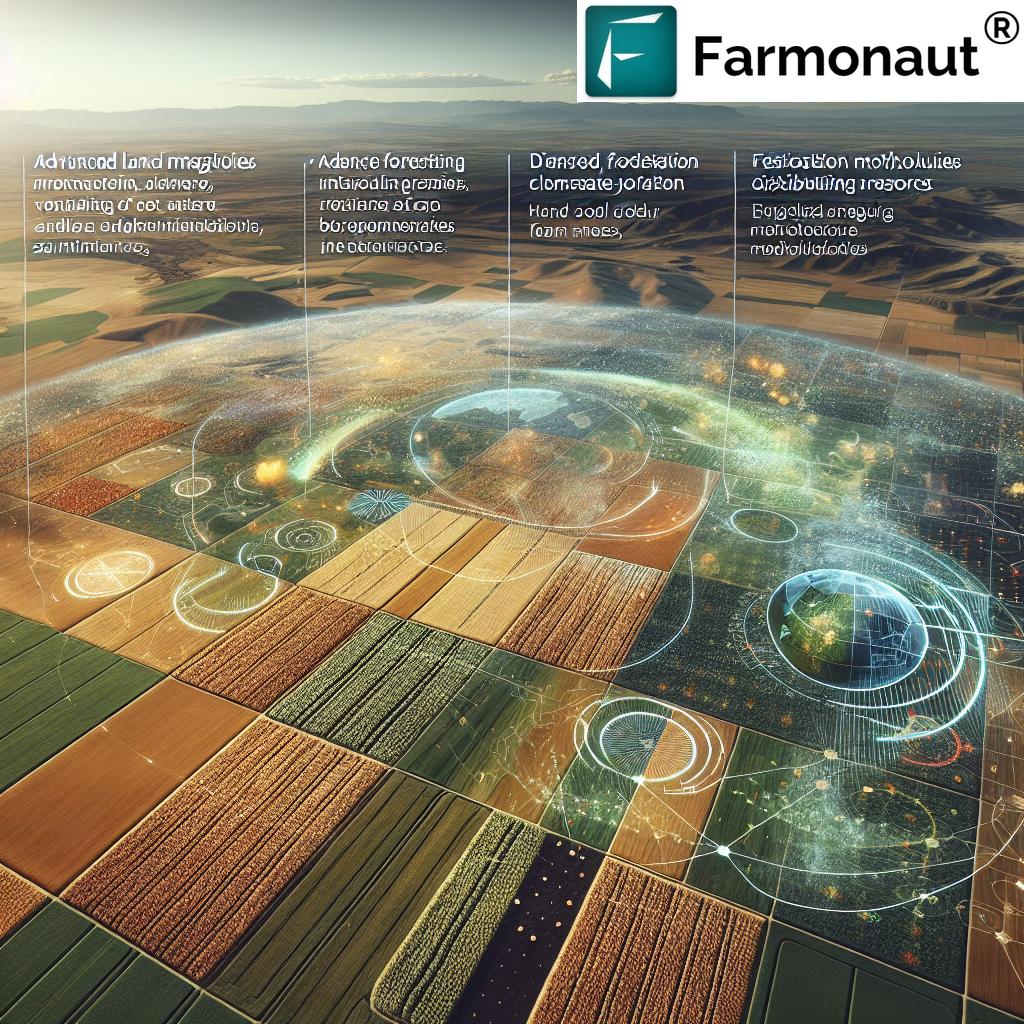California Agriculture News Today: Smart Growth & Innovation
“By 2025, California farms are projected to adopt 40% more smart irrigation systems for efficient water management.”
Summary: California Agriculture in 2025
California consistently remains the powerhouse of American agriculture, producing over a third of the country’s vegetables and two-thirds of its fruits and nuts. As we look into california agriculture news today and into 2025, the state continues to confront longstanding and emerging challenges in farming california. This article explores key trends that are shaping agriculture of California today: from technology and sustainability trends to water management, soil health, climate resilience, and shifting market dynamics. Our comprehensive analysis highlights the critical innovations and practices that point the way to sustainable growth and a thriving future for this vital sector.
Inside, you’ll discover:
- How precision technologies are driving efficiency across California’s farms
- What irrigation and water management solutions are emerging to address persistent scarcity
- New climate-resilient crops being developed to withstand change and variability
- The latest in sustainability practices—from soil carbon programs to organic farming
- The evolving role of market trends and consumer demand on California’s agricultural future
Key Trends in California Agriculture News Today
Staying up-to-date with california agriculture news is crucial in a sector that is both dynamic and vulnerable. The following trends are currently dominating the headlines and boardroom discussions:
- Accelerated adoption of smart farming and precision agriculture technologies by farmers aiming to optimize resource management and reduce costs
- Growing urgency around water scarcity, with investments in infrastructure and smarter irrigation
- Robust focus on climate resilience through breeding and genetic innovation
- Expanding portfolio of sustainable initiatives—ranging from regenerative agriculture to renewable energy integration
- Intensifying economic pressure due to rising input costs, labor shortages, and supply chain vulnerabilities
Technological Advancements Revolutionizing Agriculture California
The agriculture of California is in the midst of a technological renaissance. Californian farmers are rapidly adopting smart and precision technologies that enhance productivity and resource stewardship. Below, we highlight the most notable advancements of 2025.
Precision Tools and AI-Driven Insights
- Drones and satellite imaging enable real-time monitoring of crop health, soil conditions, and irrigation schedules. These tools help growers optimize inputs, reduce waste, and lower operational costs.
- AI-powered sensors provide precise, site-specific data for irrigation management, pest detection, and early disease warnings.
- Autonomous equipment—from driverless tractors to robotic harvesters—now help address labor shortages, improve accuracy, and further lower costs for farmers statewide.
California’s expanded use of vertical farming and hydroponics is also enabling high-yield production with significantly reduced water usage. This is a critical advancement given the persistent water scarcity that the state faces.
Satellite & Remote Sensing Solutions
Remote sensing is revolutionizing agriculture california by offering:
- Satellite-based monitoring for vegetation health evaluation, soil assessment, and yield estimation
- Real-time tracking for resource management and sustainability programs
- Tools like Farmonaut’s fleet management that empower better management of agricultural machinery, reducing operational costs and optimizing field logistics
“Over 60% of California’s agricultural innovations in 2025 will focus on sustainability and resource conservation.”
Climate Change, Water Scarcity & Resilient Farming California
The state remains highly vulnerable to climate variability. In recent california agriculture news today, extreme droughts, rising temperatures, and unpredictable precipitation are pressing challenges that continuously threaten yields, disrupt planting schedules, and stress local ecosystems.
Adaptive, climate-resilient practices are central to the ongoing health and sustainability of california agriculture.
Water Management: Conservation & Infrastructure
Smart water management sits at the heart of sustaining farming california. The state continues to invest in:
- Modernization of reservoirs and conveyance systems
- Groundwater recharge projects to enhance reliable supply
- Expansion of wastewater recycling into safe irrigation sources
- Distribution of progressive policies that incentivize adoption of efficient technologies like drip irrigation, sensor-driven soil moisture monitoring, and smart scheduling
Crop Innovation: Breeding for Resilience
Researchers are collaborating with growers and industry experts to develop varieties of crops and nut trees that are better equipped to withstand heat, salinity, and pest pressure. For instance:
- Drought-tolerant wine grapes and almond trees address both yield and quality under water-limited conditions
- Efforts to improve the genetic potential for heat, salinity, and pest resistance in staple vegetable and fruit crops
These initiatives are helping maintain quality and quantity in the face of fast-evolving climate threats.
Optimizing for the Long View: Crop Insurance, Risk & Resource Allocation
Navigating the increasing variability of the california climate, farmers leverage crop insurance and risk management programs. Farmonaut’s crop loan and insurance solutions use satellite data to verify field conditions, facilitating rapid and accurate insurance processing.
Sustainable Growth, Soil Health & Regenerative Agriculture
Sustainability is not simply a buzzword in california agriculture news today—it is central to the continued growth and success of the sector. Efforts to restore and maintain soil health, store more carbon, and promote organic production are gaining ground:
Regenerative Practices & Soil Resilience
- Cover cropping and reduced tillage protect fields from erosion and build up essential soil organic matter
- Organic amendments recycle nutrients, enhance soil structure, and improve the soil’s ability to hold water—critical for drought resilience
- Regenerative agriculture programs incentivize practices that sequester carbon, restore biodiversity, and enhance climate resilience for farmers
Check out Farmonaut’s carbon footprint monitoring product to track farm emissions and adopt climate-smart strategies easily.
Organic & Sustainable Certifications: Meeting Consumer Demand
The growing premium market for organic fruits, vegetables, and nuts is sparking more California farms to seek certification and invest in sustainable production. Certification programs ensure that consumers get transparency and the quality they expect. To further reinforce transparency and traceability in California’s agricultural supply chain, consider using Farmonaut’s traceability platform. This blockchain-powered tool brings trust and security to buyers and sellers alike.
Resource Optimization & Large Scale Farm Management
With so many pressures on land, labor, and water, large-scale growers require robust management platforms. Farmonaut’s large scale farm management offering empowers growers to optimize operations, monitor multiple plots, and track machinery—all through a seamless digital dashboard accessible via web and mobile apps.
To experience the Farmonaut platform’s full capabilities, including real-time monitoring, fleet logistics, and resource management, try our:



For developers and larger agribusinesses, Farmonaut’s satellite-powered Ag API and developer docs make robust integrations simple and scalable.
Economic Dynamics, Market Trends & Consumer Demands
California’s agricultural market is one of the most diverse and influential globally. By 2025, trends point to sustained growth in:
- Specialty crops such as almonds, strawberries, avocados, and wine grapes
- Local and organic produce reaching enthusiastic consumers through farm-to-table and CSA networks
- Premium product segments as discerning buyers demand quality and traceability
At the same time, challenges persist:
- Global supply chain disruptions and shifting trade policies create volatility for California exporters
- Rising input costs—from labor and fertilizer to water and protective equipment—test grower resilience
- Environmental compliance and carbon markets place new demands but also open up revenue streams for forward-thinking farmers
Risk management, data-driven resource allocation, and strong cooperative marketing models are all helping insulate growers from price and yield shocks, ensuring the continued health of the agriculture of California sector.
Top Agricultural Innovations & Their Impact in California (2025, Estimated)
| Innovation | Estimated Adoption Rate in California (2025, %) | Main Benefit | Estimated Environmental Impact | Potential for Yield Improvement (%) |
|---|---|---|---|---|
| AI-Driven Irrigation | 56% | Water efficiency, lower costs | Reduces water use by up to 30% | 10–15% |
| Smart Drones | 47% | Real-time crop monitoring | Reduces chemical inputs by ~20% | 7–12% |
| Satellite Crop Monitoring | 62% | Early issue detection, better planning | Less land degradation, reduced energy use | 10–20% |
| Sustainable Water Management | 70% | Ensures long-term water supply | Reduces groundwater depletion | 8–13% |
| Vertical Farming | 18% | Year-round high-value crop production | Water usage cut by 70–90% | 20–30% |
How Farmonaut Empowers Smart Farming & Sustainability in California
As technological innovation and sustainability take center stage in california agriculture news, we at Farmonaut are proud to equip farmers, businesses, and governments with a robust platform designed for resource optimization and real-time monitoring. Our solutions—including crop health tracking, large scale management tools, and carbon footprinting—allow stakeholders to:
- Monitor crops using satellite-powered NDVI and soil condition imaging
- Access AI-driven advisory systems for customized, actionable insights
- Ensure farm data is traceable, secure, and transparent via blockchain integration
- Streamline fleet and equipment logistics for better cost control
- Meet compliance standards and reporting requirements with minimal hassle
Whether managing thousands of acres or a high-value specialty vineyard, we continue to make actionable, affordable technology accessible to all stakeholders in the agriculture california sector. Interested users can explore subscriptions below:
To learn more about API-based integration and developer resources, visit our API portal or API developer docs.
FAQ: California Agriculture News & Innovation
What are the most important trends in California agriculture news today?
Key trends include a rapid move toward smart, precision farming using technologies such as drones, remote sensing, and AI-based tools; increased focus on sustainable water management; development of climate-resilient crop varieties; a rise in organic and regenerative practices; and a shift towards premium, traceable supply chains.
How are California farmers managing water scarcity in 2025?
Through investment in advanced irrigation, sensor networks, groundwater recharge initiatives, and the adoption of AI-driven scheduling, growers optimize every drop while new infrastructure projects and policies fortify access and reliability.
What role does technology play in the future of farming in California?
Technology is central to the future of farming california—enabling everything from satellite crop monitoring and robotic harvesting to blockchain-based traceability and AI-driven advisory. Platforms like Farmonaut aggregate these tools so that data-driven decision-making becomes easy, affordable, and scalable for all stakeholders.
How does sustainable and organic farming contribute to California’s agricultural growth?
Sustainable and organic practices help maintain soil fertility, reduce emissions, build resilience to climate change, and supply high-value markets. Organic programs and certifications assure consumers and help farmers access premium pricing.
How do Farmonaut’s solutions help California agriculture?
Our satellite, AI, and blockchain technologies empower California growers to monitor fields, reduce losses, enhance operational efficiency, ensure carbon compliance, and meet evolving market demands—making smart growth and innovation truly achievable.
Conclusion & The Future of California Agriculture
California’s agricultural sector continues to lead the country and the world in innovation—but the path forward requires open eyes and adaptable strategies. While water, climate, and market uncertainty remain formidable challenges, the emerging opportunities in technological advancements, sustainability, and smart management are reshaping what’s possible.
California agriculture news in 2025 and beyond will likely center on collaborative responses, breakthrough tools, and a dedication to systems that nourish both people and the planet.
By integrating digital tools, resource management innovations, and climate-smart practices, California will not only maintain its leadership but inspire similar growth across the globe.
Ready to future-proof your farm or business? Access all of Farmonaut’s insights, monitoring tools, and advisory right here.











